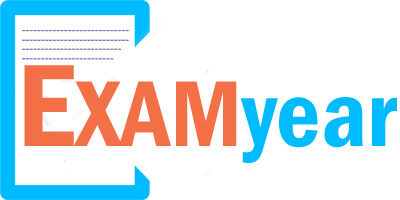Coded Inequality Questions Answers for All Competitive Examination
Direction (1-5): In the following questions, the symbols $, #, @, % and * are used with the following meanings illustrated:
A $ B means A is not smaller than B
A # B means A is neither greater than nor equal to B
A @ B means A is neither smaller than nor equal to B
A % B means A is not greater than B
A * B means A is neither greater than nor smaller than B
In each of the following questions, assuming the given statements to be true, find out which of the three conclusions I, II and III given below them is/are definitely true and indicate your answer accordingly.
1. Statements: D * Q, Q @ L, L $ B, B # G
Conclusions:
I. D @ B
II. B * D
III. G @ L
A. Either I or II only
B. I and II only
C. II only
D. II and III only
E. None of these
2. Statements: Z @ Y, Y # K, K % M, M @ T
Conclusions:
I. Z @ M
II. Y # K
III. Z # K
A. I only
B. II and II only
C. Either I or III only
D. All II, II and III
E. None of these
3. Statements: P # M, M % R, R * T, T # K
Conclusions:
I. P # R
II. P * R
III. M % L
A. I and II only
B. Either I or II only
C. III only
D. All I, II and III only
E. None of these
4. Statements: F @ H, M % H, M $ R, G * M
Conclusions:
I. F $ R
II. F @ R
III. H $ G
A. II and III only
B. II only
C. III only
D. III and either I or II
E. None of these
5. Statements: K @ T, T # D, D * F, F % G
Conclusions:
I. G @ K
II. G * T
III. G @ T
A. I and II only
B. II and III only
C. Either II or III only
D. III only
E. None of these
Directions(6-10): In the following questions, the symbols *, %, ©, @ and $ are used with the following meanings as illustrated below:
P © Q means P is neither greater than nor equal to Q
P $ Q means P is not smaller than Q
P % Q means P is not greater than Q
P * Q means P is neither greater than nor smaller than Q
P @ Q means P is neither smaller than nor equal to Q
Now in each of the following questions assuming the given statements to be true, find which of the conclusions I, II and III given below them is/are definitely true and give your answer accordingly.
6. Statements: N % J, J * B, B © D
Conclusions:
I. D @ N
II. B $ N
III. N % B
1) Only I and II are true
2) Only I and III are true
3) Only II and III are true
4) All are true
5) None of these
7. Statements: M % R, R $ K, K © T
Conclusions:
I. T © C
II. B $ N
III. N % B
1) Only I is true
2) Only I and II are true
3) Only III is true
4) Only II and III are true
5) None of these
8. Statements: J * T, T $ D, D @ F
Conclusions:
I. F % J
II. F © J\J $ D
1) Only I and II are true
2) Only II and III are true
3) Only I and Ill are true
4) None is true
5) None of these
9. Statements: H © B, B @ K, T $ B
Conclusions:
I. H © T
II. T % B
III. B @ T
1) None is true
2) On y II is true
3) Only I is true
4) Only either I or II is true
5) Only either II or III is true
10. Statements: H @ M, N % M, K © N
Conclusions:
I. H @ N
II. K © H
III. M $ K
1) None is true
2) Only I is true
3) Only I and II are true
4) Only II and III are true
5) All are true
Directions (11-15): In the following questions the symbols $, @, *, # and ? are used with the following meanings.
A $ B means A is greater than B.
A @ B means A is either greater than or equal to B.
A * B means A is equal to B
A # B means A is smaller than B
A ? B means A is either» smaller than or equal to B.
Now in each of the following questions assuming the given statements to be true, find which of the two conclusions I and II given below them is/are definitely True?
Give answer (1): If only conclusion I is true.
Give answer (2): If only conclusion II is true.
Give answer (3): If either I or II is true.
Give answer (4): If neither I nor II is true.
Give answer (5): If both I and II are true.
11. Statements: M #N, T $ U, N # U
Conclusions:
I. M ? T
II. T $ N
12. Statements: P $ T, G ? N, T @ N
Conclusions:
I. P $ N
II. G ?T
13. Statements: P ? Q, R # S, Q @ S
Conclusions:
I. P $ S
II. R # Q
14. Statements: J # K, K * F, H @ F
Conclusions:
I. J ? H
II. H $ K
15. Statements: D @,F, G $ H, F ? H
Conclusions:
I. G $ F
II. D @ H
Directions (16-20): In the following questions, the symbols @, ©, *, $ and # are used with the following meaning:
P @ Q means P is neither smaller than nor equal to Q
P © Q means P is not smaller than Q
P * Q means P is not greater than Q
P $ Q means P is neither smaller than nor greater than Q
P # Q means P is neither greater than nor equal to Q
Now in each of the following questions, assuming the given statements to be true, find which of the two conclusions I and II given below them is/are definitely true? Give answer
1) if only conclusion I is true.
2) if only conclusion II is true.
3) if either conclusion I or II is true.
4) if neither conclusion I nor II is true.
5) if both conclusions I and II are true.
16. Statements: Z # N, F © N, F * K
Conclusion:
I. K $ N
II. K @ Z
17. Statements: D $ T, T© M, M # K
Conclusions:
I. M $ D
II. D @ M
18. Statements: W © A, B * A, B @ M
Conclusions:
I. B # W
II. W: B
19. Statements: J * M, M $ N, N # T
Conclusions:
I. T @ J
II. T $ J
20. Statement: V * F, F @ R, R © G
Conclusions:
I. G # V
II. G @ V
Directions (21-25): In the following questions, e symbols $, ©, x, @ and # are used with the following meanings:
P $ Q means P is not smaller than Q.
P © Q means P is neither greater than nor smaller than Q.
P @ Q means P is not greater than Q.
P x Q means P is neither smaller than nor equal to Q.
P # Q means P is neither greater than nor equal to Q.
Now in each of the following questions, assuming the given statements to be true, find which of the ‘two conclusions I and II given below them is/are definitely true. Give answer
1) if only conclusion I is true;
2) if only conclusion II is true;
3) if either I or II is true;
4) if neither I nor II is true; and
5) if both I and II are true.
21. Statements: Z $ K, K x T, T © F
Conclusions:
I. F # Z
II. Z x T
22. Statements: K x B, B @ D, D # K
Conclusions:
I. B @ K
II. B # K
23. Statements: N© R, R @ M, M $ J
Conclusions:
I. N © M
II. N # M
24. Statements: S $ T, T @ R, R # M
Conclusions:
I. M x T
II. M © T
25. Statements: H @ V, V © M, M x R
Conclusions:
I. R x H
II. H x R
Directions (26-30): In the following questions the symbols @, #, ©, • and $ are used with the following meanings:
A @ B means A is not greater than B.
A # B means A is not smaller than B.
A © B means A is neither greater than nor smaller than B.
A • B means A is neither greater than nor equal to B
A $ B means A is neither smaller than nor equal to B
Now in each of the following questions assuming the given statements to be true, find out which of the two Conclusions I and II given below them is/are definitely true. Give answer
1) if only conclusion I is true.
2) if only conclusion II is true.
3) if either conclusion l or II is true.
4) if neither conclusion I nor II is true.
5) if both conclusions I and II re true.
26. Statements: D @ T, T • E, E $ N
Conclusions:
I. E $ D
II. T $ N
27. Statements: H • F, F # G, G © Q
Conclusions:
I. Q © F
II. Q • F
28. Statements: K • T, T $ F, F # R
Conclusions:
I. K $ R
II. F • K
29. Statements: M © R, R $ K, K # A
Conclusions:
I. M © A
II. M $ A
30. Statements: B @ V, V © M, J $ M
Conclusions:
I. J $ B
II. J $ V



